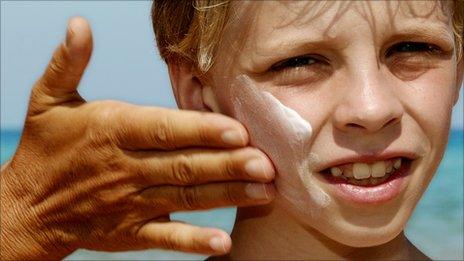How do sunscreens and lotions protect us?
- Published
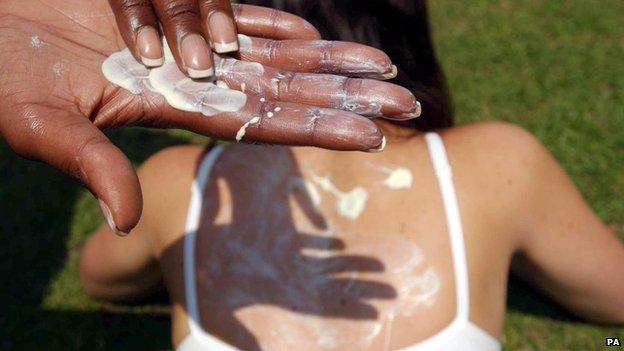
We slap it on when the sun comes out, but do we know what kind of sunscreen we are applying and what it does?

What does factor 15 actually mean?
It means the sun cream will give you medium protection against the sun's rays.
In the UK, sunscreens are labelled with an SPF which stands for sun protection factor.
This shows the level of protection against harmful ultraviolet B (UVB) radiation from the sun, which can cause skin cancer.
When looking for protection against sunburn, a high SPF or factor is what to look for.
SPF ratings between 6 and 14 offer low protection. SPF rating between 15 and 29 provide medium protection while SPF ratings of 30 to 50 offer high protection.
Factor 50 or more offers very high protection.
You can also think of it in terms of the time it takes for your skin to turn red.
If it takes 20 minutes for your unprotected skin to start turning red, using an SPF 15 sunscreen theoretically delays reddening by 15 times longer - for about five hours.
The British Association of Dermatologists recommends a sunscreen with an SPF of 30 as a "satisfactory form of sun protection".

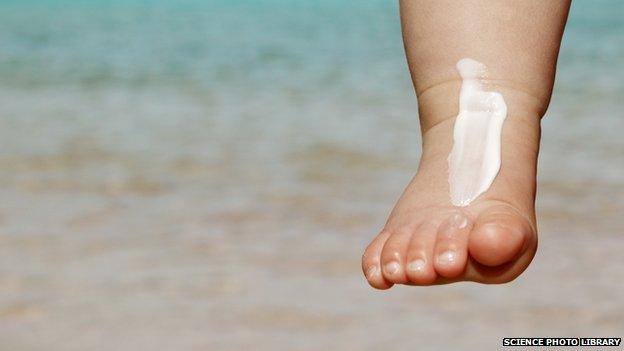
Is there a difference between sun lotion and sunscreen?
There is a huge range of different sun products available, including lotions, mousses, sprays, gels and creams.
In general, they can use either organic or inorganic filters to absorb or reflect Ultraviolet rays.
The terms 'sun lotions' and 'sunscreens' are used interchangeably to describe many of them.
'Suntan lotion' is sometimes used to refer to substances designed to accelerate tanning with little or no sun protection factor.
Some people use the term 'sunblock' to refer to sunscreens that reflect rather than absorb UV rays.
But what's more important than the name used is the product's protection qualities, which can be found on the label.

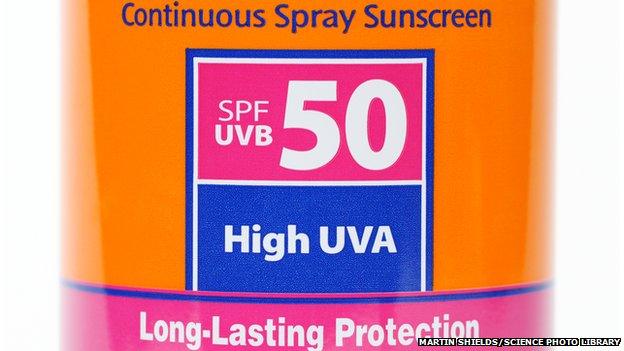
What should I look for on the label?
The SPF figure on any product is designed to measure the amount of protection against UVB rays from the sun.
But there are also ultraviolet A rays (UVA) to consider too, which cause skin-ageing and wrinkles.
These rays are not as dangerous, but there are more of them and they do penetrate the skin more deeply.
So you need to look for UVA protection (denoted by a UVA star rating) and UVB protection (denoted by the SPF) on the bottle.
The UVA star rating ranges from 0 to 5 and indicates the percentage of UVA radiation absorbed by the sunscreen in comparison to UVB.

What about sun moisturisers?
Moisturisers can still have an SPF or sun protection factor rating but they tend to be quite low.
Moisturisers are also less likely to be water resistant and rub resistant, and give less protection against UVA radiation.
They tend to be applied more thinly than other creams too.
So a sunscreen with a higher SPF and a UVA rating is much better suited to longer, more deliberate exposure to the sun, such as being on the beach.

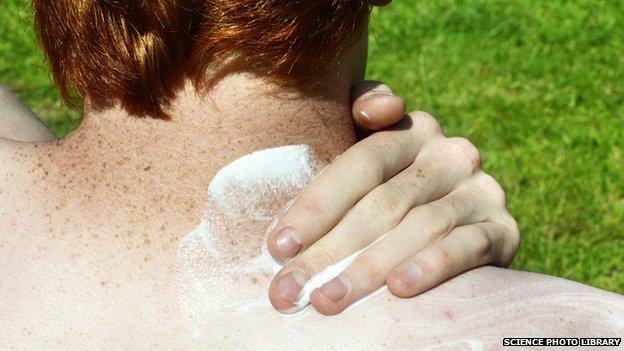
Will I still tan through sunscreen?
You may tan through a low to medium SPF sunscreen due to the tiny amount of ultraviolet which gets through.
Unless you carefully and regularly apply lots of high SPF sunscreen which also has high UVA protection too, your skin will tan.
If no ultraviolet gets through, no damage and no tanning can occur.

Any more advice?
Skin experts say it's important to know what skin type you have and how susceptible you are to sunburn and skin cancer.
That should determine how much protection you need and which sunscreen to buy.
It is also important to remember to wear protective clothing and spend time in the shade during the hottest parts of the day, particularly if you have fair skin.
Research shows that most people apply less than half the amount of sunscreen needed to provide the level of protection indicated on the label.
So putting on generous amounts of cream at regular intervals is vital to avoid burning.
Don't forget the back and sides of the neck, the temples and the ears which are all commonly missed.
- Published15 May 2015
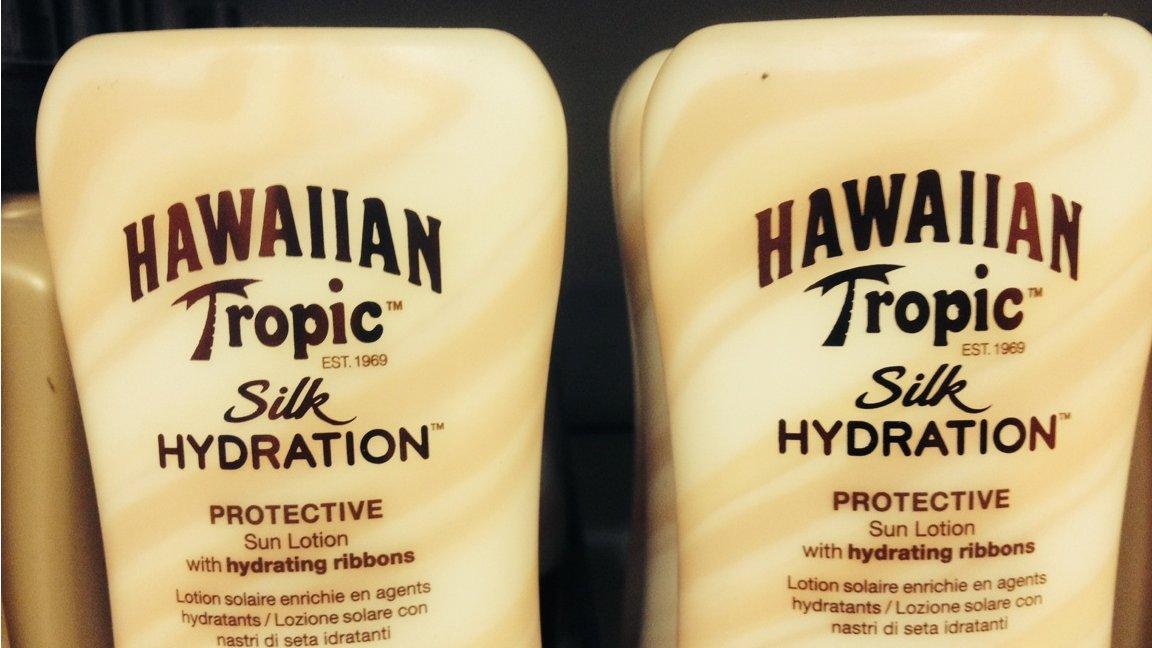
- Published4 May 2015
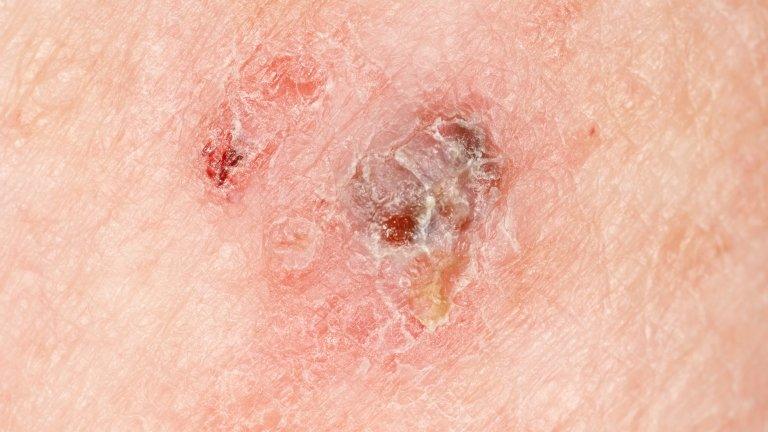
- Published1 June 2011
